#Eurasian whimbrel
Explore tagged Tumblr posts
Text
Some of the baby birds I met on this recent round of field work:


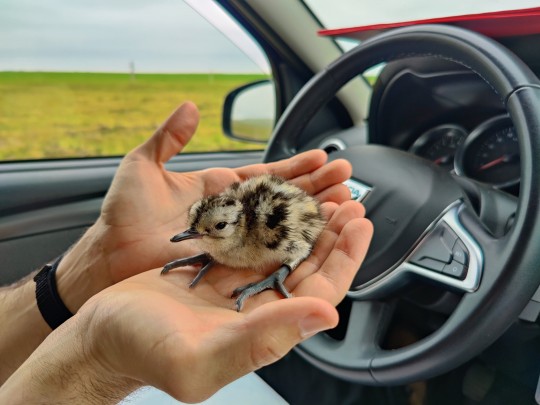

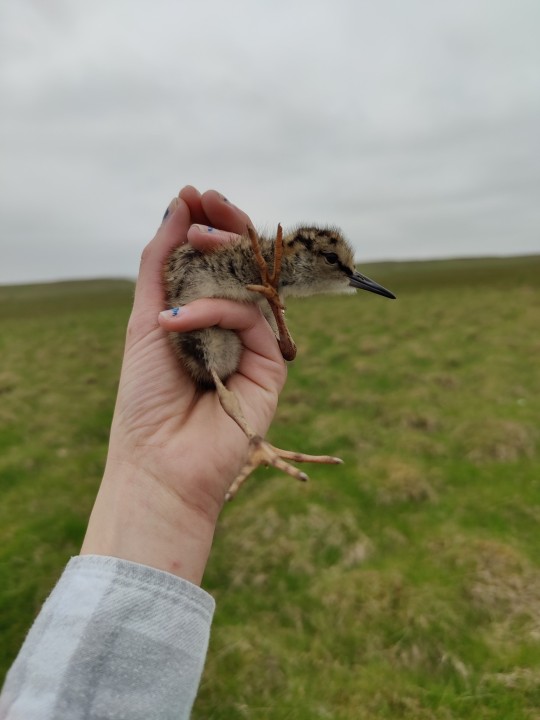

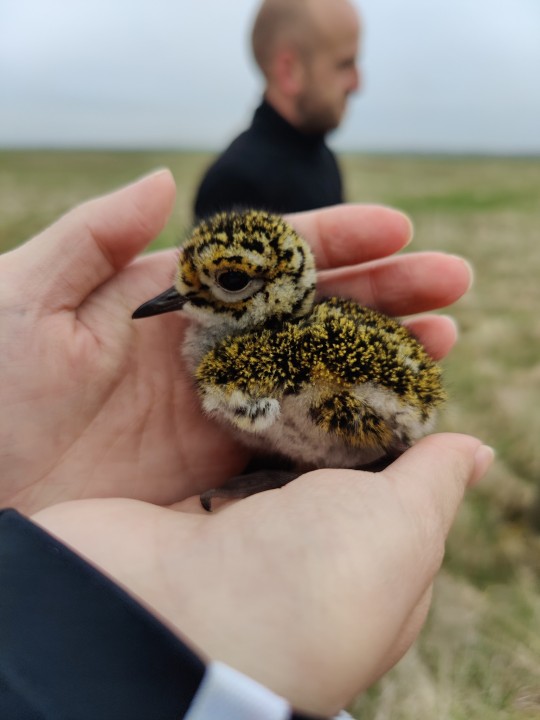
1. Limosa limosa, black-tailed godwit
2. Haematopus ostralegus, oystercatcher
3. & 4. Numenius phaeopus, Eurasian whimbrel
5. Tringa totanus, redshank
6. Charadrius hiaticula, common ringed plover
7. Pluvialis apricaria, European golden plover
#not lichens#birds#birbs#baby birds#ornithology#ecology#biology#field work#Limosa limosa#black-tailed godwit#Haematopus ostralegus#oystercatcher#Numenius phaeopus#Eurasian whimbrel#redshank#Tringa totanus#Charadrius hiaticula#common ringed plover#Pluvialis apricaria#European golden plover
4K notes
·
View notes
Text

67. Eurasian Whimbrel (baby!!)
309 notes
·
View notes
Text
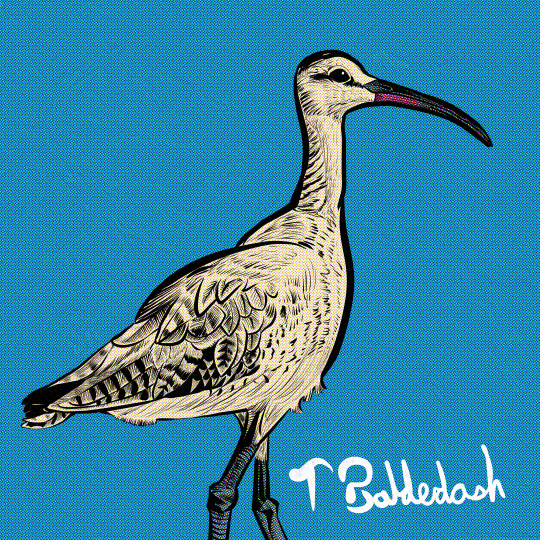
Day 4 of Migratory May: Whimbrel
Reference photo by Martin Pelanek
#migratory may#whimbrel#common whimbrel#eurasian whimbrel#white-rumped whimbrel#numenius phaeopus#numenius#scolopacidae#charadriiformes#bird#birb#bird art#birds#birbs#art#digital art#artists on tumblr#tw eyestrain#cw eyestrain#wauk wauk
48 notes
·
View notes
Text

a eurasian whimbrel (numenius phaeopus) foraging on a headland in ireland
#charadriiformes#scolopacidae#numenius#eurasian whimbrel#whimbrel#shorebirds#birds#birdwatching#bird photography#display flight#i looooove whimbrels. they're like curlews but shorter#had to crouch behind a grassy bank to get this. felt like a soldier in the trenches
2 notes
·
View notes
Text





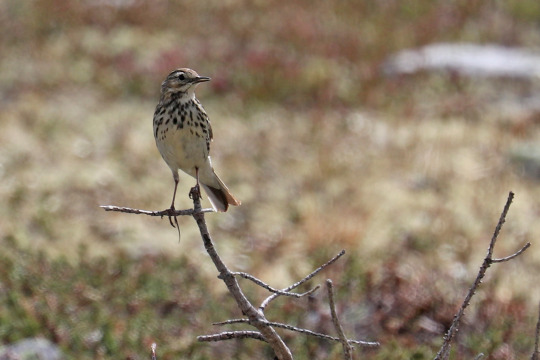
Birds of Vedungsfjällen: Kestrel/tornfalk, rock ptarmigan/fjällripa, Eurasian whimbrel/småspov, lesser whitethroat/ärtsångare, European golden plover/ljungpipare and meadow pipit/ängspiplärka. Vedungsfjällen nature reserve in Dalarna, Sweden (June 7, 2021).
242 notes
·
View notes
Text
Year End Wrap-Up

The Pygmy Cormorant by @/entguarde has the least correct percentage of votes. Bird-314 finished out with only 8.7% correct with a with a total of 252 votes.
Our bottom 5 correct is as follows;
1. Pygmy Cormorant 8.7% 2. American Flamingo 12.5% 3. Great Kiskadee 13.1% 4. Eurasian Whimbrel 13.5% 5. Greater Yellowlegs 14.4%
If we factor out none of the above questions, the lowest bird would be Short-billed Gull by @/yellow-octopus with only 14.6% correct.
12 notes
·
View notes
Text


Eurasian Whimbrel (Numenius phaeopus)
Rosscarbery Estuary, Co. Cork - 03-08-2024
#first time I've seen them with curlew so it was nice to be able to compare#whimbrel#scolopacidae#birds#birds of tumblr#birdblr
15 notes
·
View notes
Text
The North Norfolk Coast! 19,000 acres of salt marshes, sand dunes and mud flats. It's home to rare voles, toads, and beetles, a wide array of birds with great names like Sandwich tern, bearded reedling, Eurasian oystercatcher, and whimbrel, and plants with names like matted sea lavender, scrubby sea-blite, pyramidal orchid, and lesser centaury. There's also a colony of seals at Blakeney Point that I saw on a school trip when I was a kid.
The area is also rich in archaeological finds dating back as far as the late Paleolithic. Maybe the most notable are the two Bronze Age timber circles found at Holme. Holme I (the first to be discovered) is a 20-foot-wide enclosure of closely spaced oak trunks around an inverted oak stump, and was named "Seahenge" by the press because the salt marsh where the circles were built has become a sandy beach in the millennia since. Not far away is Holme II, a 43-foot-wide circle surrounding a fenced-off pit. Analysis of the timber shows that the two circles were built together, in 2049 BC.
Below are 10 featured Wikipedia articles. Links and descriptions are below the cut.
The election in 1860 for the position of Boden Professor of Sanskrit at the University of Oxford was a competition between two candidates offering different approaches to Sanskrit scholarship. One was Monier Williams, an Oxford-educated Englishman who had spent 14 years teaching Sanskrit to those preparing to work in British India for the East India Company. The other, Max Müller, was a German-born lecturer at Oxford specialising in comparative philology, the science of language.
Adolfo Farsari (Italian pronunciation: [aˈdolfo farˈsaːri]; 11 February 1841 – 7 February 1898) was an Italian photographer based in Yokohama, Japan. His studio, the last notable foreign-owned studio in Japan, was one of the country's largest and most prolific commercial photographic firms. Largely due to Farsari's exacting technical standards and his entrepreneurial abilities, it had a significant influence on the development of photography in Japan.
Girl Pat was a small fishing trawler, based at the Lincolnshire port of Grimsby, that in 1936 was the subject of a media sensation when its captain took it on an unauthorised transatlantic voyage. The escapade ended in Georgetown, British Guiana, with the arrest of the captain, George "Dod" Orsborne, and his brother. The pair were later imprisoned for the theft of the vessel.
Abu Muhammad Hasan al-Kharrat (Arabic: حسن الخراط Ḥassan al-Kharrāṭ; 1861 – 25 December 1925) was one of the principal Syrian rebel commanders of the Great Syrian Revolt against the French Mandate. His main area of operations was in Damascus and its Ghouta countryside. He was killed in the struggle and is considered a hero by Syrians.
Marjorie Cameron Parsons Kimmel (April 23, 1922 – July 24, 1995), who professionally used the mononym Cameron, was an American artist, poet, actress and occultist. A follower of Thelema, the new religious movement established by the English occultist Aleister Crowley, she was married to rocket pioneer and fellow Thelemite Jack Parsons.
Maya stelae (singular stela) are monuments that were fashioned by the Maya civilization of ancient Mesoamerica. They consist of tall, sculpted stone shafts and are often associated with low circular stones referred to as altars, although their actual function is uncertain. Many stelae were sculpted in low relief, although plain monuments are found throughout the Maya region. The sculpting of these monuments spread throughout the Maya area during the Classic Period (250–900 AD), and these pairings of sculpted stelae and circular altars are considered a hallmark of Classic Maya civilization.
The North Norfolk Coast Site of Special Scientific Interest (SSSI) is an area of European importance for wildlife in Norfolk, England. It comprises 7,700 ha (19,027 acres) of the county's north coast from just west of Holme-next-the-Sea to Kelling, and is additionally protected through Natura 2000, Special Protection Area (SPA) listings; it is also part of the Norfolk Coast Area of Outstanding Natural Beauty (AONB). The North Norfolk Coast is also designated as a wetland of international importance on the Ramsar list and most of it is a Biosphere Reserve.
Preening is a maintenance behaviour found in birds that involves the use of the beak to position feathers, interlock feather barbules that have become separated, clean plumage, and keep ectoparasites in check. Feathers contribute significantly to a bird's insulation, waterproofing and aerodynamic flight, and so are vital to its survival. Because of this, birds spend considerable time each day maintaining their feathers, primarily through preening.
The Wells and Wellington affair was a dispute about the publication of three papers in the Australian Journal of Herpetology in 1983 and 1985. The periodical was established in 1981 as a peer-reviewed scientific journal focusing on the study of amphibians and reptiles (herpetology). Its first two issues were published under the editorship of Richard W. Wells, a first-year biology student at Australia's University of New England. Wells then ceased communicating with the journal's editorial board for two years before suddenly publishing three papers without peer review in the journal in 1983 and 1985. Coauthored by himself and high school teacher Cliff Ross Wellington, the papers reorganized the taxonomy of all of Australia's and New Zealand's amphibians and reptiles and proposed over 700 changes to the binomial nomenclature of the region's herpetofauna.
Wulfhere or Wulfar (died 675) was King of Mercia from 658 until 675 AD. He was the first Christian king of all of Mercia, though it is not known when or how he converted from Anglo-Saxon paganism. His accession marked the end of Oswiu of Northumbria's overlordship of southern England, and Wulfhere extended his influence over much of that region.
#(or 7652 RHE)#i also saw Seahenge when i was a kid but not on the coast#it's in a museum now#Wikipedia polls
26 notes
·
View notes
Text
Chiloe and its Migratory Birds
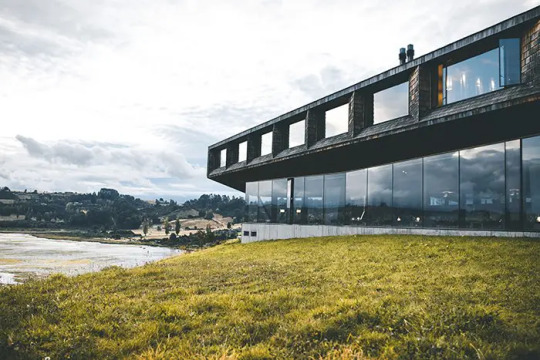
More than 20 migratory bird species come to Chiloe every year. Some come from the south, others from the north and still others from the Andes Mountains. Their favorite spots are coastal marshes like Pullao Wetlands and evergreen forests, where they build nests, rest and feed.
Migration occurs according to changes in climate, availability of food and reproductive needs. It is a seasonal cycle of comings and goings during which these birds seek to take advantage of favorable conditions in different areas.
Migratory birds can be classified into different groups based on their movements:
Boreal Migration: These species leave their nesting spots in the Arctic to travel thousands of kilometers south during the boreal winter. They even turn up in Tierra del Fuego, meaning they have flown from one side of the world to the other. The following birds from this category can be found in Chiloe:
Greater yellowlegs (tringa melanoleuca): This bird arrives from the Arctic to South America each summer. In Chiloe it is usually found alone or in small groups eating invertebrates in streams and along the shore in areas with protective plant cover.
Baird’s sandpiper (calidris bairdii): This frequent visitor arrives to Chiloe in the summer and moves along interior coasts in flocks of 10 to 20 birds. It can also be found along beaches on the open sea.
Eurasian whimbrel (numenius phaeopus): This is one of the most common migratory species during Chiloe summers. It is usually found alone when on the beach, while it prefers groups of hundreds in marshes. It travels from Alaska and Canada to Tierra del Fuego.
Hudsonian godwit (limosa haemastica): This is the bird that escapes the boreal forest winter in the largest numbers to come Chiloe. The marshes on the eastern side of the archipelago are its main feeding grounds. An estimated 20% of the world population of Hudsonian godwits is found at Pullao Wetlands.
Western osprey (pandion haliaetus): This raptor arrives to Chiloe from the southern-central United States in search of fish especially from large inland rivers.
Ruddy turnstone (arenaria interpres): This is a beautiful, but scarce, Chiloe shorebird. These can be found in small flocks feeding near the water. If you are patient and lucky, you might see them turning over rocks to find their food.

Neotropical Migration: This group migrates from the southern United States, Mexico, Central America and northern South America. The following species can be found in Chiloe:
White-crested elaenia (elaenia albiceps): This is the only neotropical migratory species that nests in Chiloe during the summer. It arrives in October and leaves the archipelago in April to return to the Amazon in Brazil.
Black skimmer (rynchops niger): This bird arrives to Chile from the neotropics in October where it spreads out among the marshes of the Archipelago of Chiloe. It is known for leaving a showy wake as it forages in flight.
Austral Migration: This group includes the species that nest in the southern cone, especially in the region of Chilean and Argentine Patagonia. These birds migrate north during the fall and winter months. Birds of this type found in Chiloe are:
Two-banded plover (charadrius falklandicus): This small shorebird migrates from Tierra del Fuego to Chiloe during the winter. It then returns to extreme southern Chile to nest. Some groups stay in northern areas all year.
Rufous-chested plover (charadrius modestus): This is one of the most common visitors to the Chiloe coast in winter. It feeds in tidal flats, such as Pullao Wetlands, hunting for invertebrates during the low tide.
Silvery grebe (podiceps occipitalis): This small, water bird enjoys diving in the waters of the archipelago of Chiloe until October. In the winter, it nests in the freshwater lakes of Patagonia.
Chilean flamingo (phoenicopterus chilensis): This is definitely one of Chiloe’s most striking migratory birds. It arrives from the Patagonia pampa in autumn and stays until August when it heads back to its inland lake breeding areas.
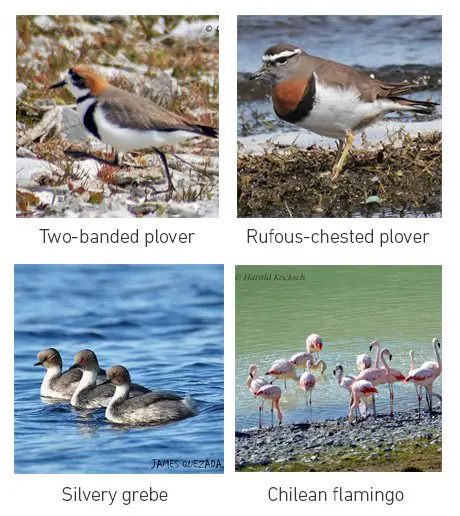
Altitudinal migration: This group includes species that migrate from and toward the Andes Mountains, central valleys and the coast, where they feed before returning to their breeding areas at higher altitudes. The following species of this type can be found in Chiloe:
Dark-faced ground tyrant (muscisaxicola macloviana): This bird migrates during winter throughout Chile at different times and in varying directions. Then it returns to the foothills above the tree line for reproduction.
Grey-flanked cinclodes (cinclodes oustaleti): This bird is often found feeding in urban areas. It travels from the mountains to the coast during the winter and stays there between April and October.
Patagonia tyrant (colorhamphus parvirostris): This bird migrates from the wooded foothills in southern Chile to the north and sea-level forests to avoid the winter cold and snow. It stays in Chiloe until spring when it returns to its nesting grounds.
It is likely that you will see some of these migratory species during the excursions offered by Tierra Chiloé. If you are interested in birdwatching, our guides are well trained to help you birdwatch in a way that is respectful toward the environment. Whether you are an expert or novice, this experience will connect you to nature in a very special way.
0 notes
Photo

“As awful July takes hold, I'd rather head to Þingvellir in Iceland. Here more time is on offer, the world is widening - the crack in its skin is the meeting of the N American & Eurasian tectonic plates. There are baby whimbrels & arctic terns ply & stitch at the coronal suture.” - Tim Dee.
0 notes
Text
Dw00115 Eurasian whimbrel
Watercolor of Eurasian whimbrel (Numenius phaeopus – Lille regnspove)
Illustration of Eurasian whimbrel bird
Watercolor by Frits Ahlefeldt

Dw00115 Eurasian whimbrel. Bird watercolor illustration
Bird watercolor ref. number: Dw00115
See more of my: Bird watercolors or Animal watercolors
keywords: animal watercolour, watercolor, wildlife, painting, bird, birds, biodiversity,…
View On WordPress
0 notes
Photo

Outros animais amistosos, como este Maçarico-Galego, aventuram-se na cidade de Mindelo. Other friendly animals, like this Eurasian Whimbrel, venture into the city of Mindelo. February 2020. Mindelo, São Vicente, Cabo Verde. (at Mindelo, Cape Verde) https://www.instagram.com/p/B_mwKdop17M/?igshid=14m1v6rzikz11
0 notes
Text
January Roundup
I'm off to a slow start. I'm recovering from the flu, which knocked me out for a week! Right now I'm at 114 birds. Not an impressive way to begin, but slow and steady wins the race, right? To keep my records straight, here's a list of the birds I've seen in January:
1 Canada Goose - Redwood Creek, CA - 1/1/2017 2 American Wigeon - Redwood Creek , CA - 1/1/2017 3 Mallard - Redwood Creek, CA - 1/1/2017 4 Northern Pintail - Redwood Creek, CA - 1/1/2017 5 Redhead - Redwood Creek, CA - 1/1/2017 6 Turkey Vulture - Redwood Creek, CA - 1/1/2017 7 Northern Harrier - Redwood Creek, CA - 1/1/2017 8 Red-shouldered Hawk - Redwood Creek, CA 1/1/2017 9 Red-tailed Hawk - Redwood Creek, CA 1/1/2017 10 American Coot - Redwood Creek, CA 1/1/2017 11 Killdeer - Redwood Creek, CA 1/1/2017 12 Mourning Dove - Redwood Creek, CA 1/1/2017 13 Chestnut-backed Chickadee - Redwood Creek, CA 1/1/2017 14 Pacific Wren - Redwood Creek, CA 1/1/2017 15 Ruby-crowned Kinglet - Redwood Creek, CA 1/1/2017 16 Wrentit - Redwood Creek, CA 1/1/2017 17 European Starling - Redwood Creek, CA 1/1/2017 18 Song Sparrow - Redwood Creek, CA 1/1/2017 19 Red-winged Blackbird - Redwood Creek, CA 1/1/2017 20 House Sparrow - Redwood Creek, CA 1/1/2017 21 Canvasback - Freshwater Lagoon, CA - 1/2/2017 22 Common Pochard - Freshwater Lagoon, CA - 1/2/2017 (!) 23 Hooded Merganser - Freshwater Lagoon, CA - 1/2/2017 24 Ruddy Duck - Freshwater Lagoon, CA - 1/2/2017 25 Western Grebe - Freshwater Lagoon, CA - 1/2/2017 26 Clark's Grebe - Freshwater Lagoon, CA - 1/2/2017 27 Double-crested Cormorant - Freshwater Lagoon, CA - 1/2/2017 28 Osprey - Freshwater Lagoon, CA - 1/2/2017 29 Black Phoebe - Freshwater Lagoon, CA - 1/2/2017 30 Steller's Jay - Freshwater Lagoon, CA - 1/2/2017 31 Dark-eyed Junco - Freshwater Lagoon, CA - 1/2/2017 32 Cackling Goose - Arcata Marsh and Wildlife Sanctuary, CA - 1/2/2017 33 Cinnamon Teal - Arcata Marsh and Wildlife Sanctuary, CA - 1/2/2017 34 Green-winged Teal - Arcata Marsh and Wildlife Sanctuary, CA - 1/2/2017 35 Greater Scaup - Arcata Marsh and Wildlife Sanctuary, CA - 1/2/2017 36 Lesser Scaup - Arcata Marsh and Wildlife Sanctuary, CA - 1/2/2017 37 Bufflehead - Arcata Marsh and Wildlife Sanctuary, CA - 1/2/2017 38 Eared Grebe - Arcata Marsh and Wildlife Sanctuary, CA - 1/2/2017 39 Great Blue Heron - Arcata Marsh and Wildlife Sanctuary, CA - 1/2/2017 40 American Crow - Arcata Marsh and Wildlife Sanctuary, CA - 1/2/2017 41 Common Raven - Arcata Marsh and Wildlife Sanctuary, CA - 1/2/2017 42 Black-capped Chickadee - Arcata Marsh and Wildlife Sanctuary, CA - 1/2/2017 43 Fox Sparrow - Arcata Marsh and Wildlife Sanctuary, CA - 1/2/2017 44 Golden-crowned Sparrow - Arcata Marsh and Wildlife Sanctuary, CA - 1/2/2017 45 Snowy Egret - Arcata Marsh and Wildlife Sanctuary, CA - 1/3/2017 46 Black-crowned Night-Heron - Arcata Marsh and Wildlife Sanctuary, CA - 1/3/2017 47 Gadwall - Arcata Marsh and Wildlife Sanctuary, CA - 1/4/2017 48 Pied-billed Grebe - Arcata Marsh and Wildlife Sanctuary, CA - 1/4/2017 49 Western Sandpiper - Arcata Marsh and Wildlife Sanctuary, CA - 1/4/2017 50 Greater Yellowlegs - Arcata Marsh and Wildlife Sanctuary, CA - 1/4/2017 51 Willet - Arcata Marsh and Wildlife Sanctuary, CA - 1/4/2017 52 Rock Pigeon - Arcata Marsh and Wildlife Sanctuary, CA - 1/4/2017 53 Anna's Hummingbird - Arcata Marsh and Wildlife Sanctuary, CA - 1/4/2017 54 Belted Kingfisher - Arcata Marsh and Wildlife Sanctuary, CA - 1/4/2017 55 Marsh Wren - Arcata Marsh and Wildlife Sanctuary, CA - 1/4/2017 56 Golden-crowned Kinglet - Arcata Marsh and Wildlife Sanctuary, CA - 1/4/2017 57 Cedar Waxwing - Arcata Marsh and Wildlife Sanctuary, CA - 1/4/2017 58 Orange-crowned Warbler - Arcata Marsh and Wildlife Sanctuary, CA - 1/4/2017 59 White-crowned Sparrow - Arcata Marsh and Wildlife Sanctuary, CA - 1/4/2017 60 House Finch - Arcata Marsh and Wildlife Sanctuary, CA - 1/4/2017 61 American Goldfinch - Arcata Marsh and Wildlife Sanctuary, CA - 1/4/2017 62 Least Sandpiper - Arcata Marsh and Wildlife Sanctuary, CA - 1/5/2017 63 Hermit Thrush - Arcata Marsh and Wildlife Sanctuary, CA - 1/5/2017 64 Brown Pelican - Woodley Island, CA - 1/6/2017 65 Great Egret - Woodley Island, CA - 1/6/2017 66 Marbled Godwit - Woodley Island, CA - 1/6/2017 67 Western Gull - Woodley Island, CA - 1/6/2017 68 Northern Flicker - Woodley Island, CA - 1/6/2017 69 Peregrine Falcon - Woodley Island, CA - 1/6/2017 70 Northern Shoveler - Humboldt Bay NWR, Hookton Slough Unit, CA - 1/8/2017 71 Ring-necked Duck - Humboldt Bay NWR, Hookton Slough Unit, CA - 1/8/2017 72 White-tailed Kite - Humboldt Bay NWR, Hookton Slough Unit, CA - 1/8/2017 73 American Avocet - Humboldt Bay NWR, Hookton Slough Unit, CA - 1/8/2017 74 Whimbrel - Humboldt Bay NWR, Hookton Slough Unit, CA - 1/8/2017 75 American Kestrel - Humboldt Bay NWR, Hookton Slough Unit, CA - 1/8/2017 76 Tufted Duck - Arcata Marsh and Wildlife Sanctuary, CA - 1/9/2017 77 Common Goldeneye - Arcata Marsh and Wildlife Sanctuary, CA - 1/9/2017 78 Long-billed Curlew - Arcata Marsh and Wildlife Sanctuary, CA - 1/9/2017 79 Ring-billed Gull - Arcata Marsh and Wildlife Sanctuary, CA - 1/9/2017 80 California Gull - Arcata Marsh and Wildlife Sanctuary, CA - 1/9/2017 81 Brandt's Cormorant - Mad River Slough, CA - 1/10/2017 82 Common Loon - Eureka, CA - 1/12/2017 83 Surf Scoter - Woodley Island, CA - 1/13/2017 84 Pacific Loon - Woodley Island, CA - 1/13/2017 85 American Robin- Woodley Island, CA - 1/13/2017 86 American Pipit - Fay Slough Wildlife Area, CA - 1/14/2017 87 Common Yellowthroat - Fay Slough Wildlife Area, CA - 1/14/2017 88 Yellow-rumped Warbler - Fay Slough Wildlife Area, CA - 1/14/2017 89 Western Meadowlark- Fay Slough Wildlife Area, CA - 1/14/2017 90 Purple Finch - Fay Slough Wildlife Area, CA - 1/14/2017 91 White-winged Scoter - Klamath River, CA - 1/15/2017 92 Black Scoter- Klamath River, CA - 1/15/2017 93 Common Merganser - Klamath River, CA - 1/15/2017 94 Black-legged Kittiwake - Klamath River, CA - 1/15/2017 95 Mew Gull - Klamath River, CA - 1/15/2017 96 Glaucous-winged Gull - Klamath River, CA - 1/15/2017 97 Lincoln's Sparrow - Klamath River, CA - 1/15/2017 98 Eurasian Wigeon - Arcata Marsh and Wildlife Sanctuary, CA - 1/16/2017 99 Dunlin - Arcata Marsh and Wildlife Sanctuary, CA - 1/16/2017 100 Savannah Sparrow - Arcata Marsh and Wildlife Sanctuary, CA - 1/16/2017 101 Cooper's Hawk - Arcata, CA 1/20/2017 102 Brewer's Blackbird - Eureka Waterfront, CA - 1/21/2017 103 Brown-headed Cowbird Brewer's Blackbird - Eureka Waterfront, CA - 1/21/2017 104 Brant - Woodley Island, CA 1/21/2017 105 Black-bellied Plover - Woodley Island, CA - 1/21/2017 106 Horned Grebe Big Lagoon County Park, CA - 1/22/2017 107 Snowy Plover - Big Lagoon County Park, CA - 1/22/2017 108 Red-throated Loon - Freshwater Lagoon, CA - 1/22/2017 109 Varied Thrush - Freshwater Lagoon, CA 1/22/2017 110 Sharp-shinned Hawk - Cooper Gulch Park, CA - 1/27/2017 111 Brown Creeper - Cooper Gulch Park, CA - 1/27/2017 112 Pelagic Cormorant - Moonstone Beach, CA - 1/28/2017 113 Black Oystercatcher - Moonstone Beach, CA - 1/28/2017 114 Surfbird - Moonstone Beach, CA - 1/28/2017
1 note
·
View note
Text
Before we left this morning we were treated to the sight of a Barn Owl hunting in the field at the end of the garden. Eventually, it perched in a tree.
Our first stop this morning was Kelling Heath in search of Dartford Warbler. This specialised habitat is never prolific for birds but has a specialised population that cannot be seen elsewhere. We located a suitable area and waited for the birds to show themselves, but without luck. A conversation with local told us that they had bred here but seem to have moved on in the last couple of weeks.
Our next stop was for refreshment at the Old Reading room in Kelling. This rather unique combination of a second-hand bookshop, art gallery and tea shop made a pleasant break.
Driving West along the coast we came to the small reserve and bird observatory at Walsey Hills. There was little bird life in the scrub, but we did find 4 Little Grebes and a Green Sandpiper on the small lake.
Continuing west we arrived at the Norfolk Wildlife Trust at Cley Marshes.
A Peregrine Falcon flushed the ducks and wading birds as we approached the marsh. From the hides, we saw Little Ringed Plover and Green Sandpiper along with more common waders.
Green Sandpiper
Little Ringed Plover
Lapwing (left), Pied Avocet (Top Right) and Ruff (Bottom Right)
Back at our cottage, we found a Hummingbird Hawkmoth resting on the cottage wall.
Greylag Goose [sp] (Anser anser) Mute Swan (Cygnus olor) Common Shelduck (Tadorna tadorna) Northern Shoveler (Spatula clypeata) Eurasian Wigeon (Mareca penelope) Mallard [sp] (Anas platyrhynchos) Northern Pintail (Anas acuta) Eurasian Teal (Anas crecca) Tufted Duck (Aythya fuligula) Common Pheasant [sp] (Phasianus colchicus) Little Grebe [sp] (Tachybaptus ruficollis) Great Cormorant [sp] (Phalacrocorax carbo) Common Buzzard [sp] (Buteo buteo) Eurasian Coot [sp] (Fulica atra) Pied Avocet (Recurvirostra avosetta) Northern Lapwing (Vanellus vanellus) Little Ringed Plover [sp] (Charadrius dubius) Whimbrel [sp] (Numenius phaeopus) Eurasian Curlew [sp] (Numenius arquata) Black-tailed Godwit [sp] (Limosa limosa) Ruff (Calidris pugnax) Common Snipe [sp] (Gallinago gallinago) Green Sandpiper (Tringa ochropus) Common Redshank [sp] (Tringa totanus) Black-headed Gull (Chroicocephalus ridibundus) European Herring Gull [sp] (Larus argentatus) Lesser Black-backed Gull [sp] (Larus fuscus) Stock Dove [sp] (Columba oenas) Common Wood Pigeon [sp] (Columba palumbus) Western Barn Owl [sp] (Tyto alba) Tawny Owl [sp] (Strix aluco) Great Spotted Woodpecker [sp] (Dendrocopos major) Common Kestrel [sp] (Falco tinnunculus) Peregrine Falcon [sp] (Falco peregrinus) Western Jackdaw [sp] (Coloeus monedula) Rook [sp] (Corvus frugilegus) Carrion Crow [sp] (Corvus corone) Barn Swallow [sp] (Hirundo rustica) Common House Martin [sp] (Delichon urbicum) Common Blackbird [sp] (Turdus merula) White Wagtail [sp] (Motacilla alba)
Small White (Artogeia rapae) Red Admiral (Vanessa atalanta)
Migrant Hawker (Aeshna mixta) Southern Hawker (Aeshna cyanea) Common Darter (Sympetrum striolatum)
Humming-bird Hawk-moth (Macroglossum stellatarum)
Norfolk journey 2018: Day 3 Before we left this morning we were treated to the sight of a Barn Owl hunting in the field at the end of the garden.
0 notes
Text
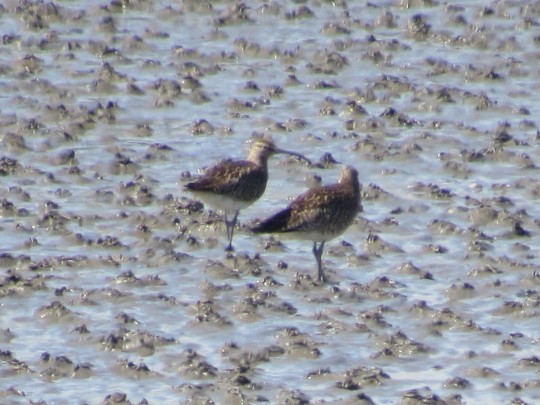
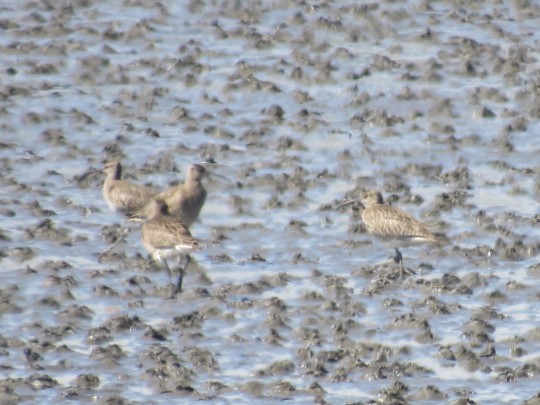
a flock of eurasian whimbrel (numenius phaeopus), ireland
#charadriiformes#scolopacidae#numenius#eurasian whimbrel#whimbrel#birds#shorebirds#birdwatching#bird photography#display flight#it was hazy out so photos aren't the best but posting anyways because i love whimbrel <33
2 notes
·
View notes
Photo

Eurasian whimbrel/småspov.
119 notes
·
View notes